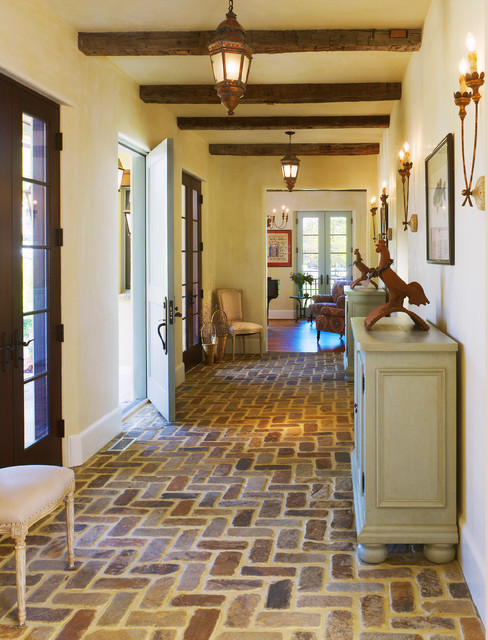Flooring Construction, Materials, and Flooring Shop
Flooring is an important part of interiors. They are a necessary part of a room, but are often overlooked. They are so many details that go into flooring that is not often thought about.
Construction is the first part of flooring that needs to be discussed. First, what is the room being used for. There is wood framing (light and heavy timber), Steel framing that can be combined with concrete as well, and just concrete construction. Wood framing is mostly used for residential but can be used for commercial. It is cheaper to construct especially in areas that have local timber mills. Another common flooring material is concrete. Concrete is also cheap to buy and very durable. There are many different styles of construction involving concrete, most options involve pouring the concrete in place.
This image is showing concrete that is poured with concrete joist and steel reinforcement bars.
 Another example of concrete construction but with steel sheeting and steel beams. Often times this construction uses cast-in-place panels and steel reinforcement bars.
Another example of concrete construction but with steel sheeting and steel beams. Often times this construction uses cast-in-place panels and steel reinforcement bars.
After construction, floor finishing materials are your next decision as a designer. Hard surfaces, soft surfaces, and resilient materials. Hard surfaces: concrete, brick, stone, terrazzo, and ceramic tile. Brick was mostly used in historical homes. It is not used now a days because of how cold it is on the feet and how it soaks up stains. Pros of having a brick flooring would be that it is very durable and fireproof.


In these two images it is two different versions of herringbone brick patterns.
Soft surfaces are mainly made up of carpet and rugs. Carpet is used in both residential and commercial. It is a great material to cancel noise and provide comfort within the space. Many different types of carpet weaves provide a different texture and pattern. Some weaves are the administer, wilton, loops, and tufts.
Wilton: woven from the back, unused color strands are woven into the backing.
Axminister: the backing and the yarn is woven together, most commonly used weave and very durable for a carpet.
Tufted: yarns are woven through the backing (similar to a loop weave) and an adhesive is added to the back. Some yarns are cut to create that tuft texture.
Loops: the yarn is woven through the back and back through the front. There can be different heights to these loops creating texture and pattern. It is also a very durable weave for a carpet.

The last floor finishing materials is a resilient flooring: rubber, linoleum, cork, and bamboo. These materials are the most sustainable materials and are healthy for the environment. Rubber is slip-resistant and durable except when exposed to oil and then it starts to break down. Linoleum is similar to vinyl, but different because of the ingredients used to created it. Linseed oil, rosin limestone, and jute backing are the most common ingredients and these help Linoleum be naturally anti-microbial.
 The picture on the left shows us the different layers of linoleum construction and how it is used over a concrete flooring frame.
The picture on the left shows us the different layers of linoleum construction and how it is used over a concrete flooring frame.
I have only begun to touch on everything that goes into flooring construction, but you can see how important it is to know what products to use for your room.
The experience of the flooring shopping was informational. I was able to look at many different flooring options ranging from carpet, rugs, different wood flooring, vinyl, and tile.














Emmaline- this was an outstanding Blog Entry. I can feel your excitement and interest in this topic. You summarized the textbook and its presentation of flooring systems and finishes. I just loved how you discussed details and historic use of brick. You also went into detail concerning the various weaves and types of carpet. I looked at all of your extra resources and they were very interesting. 50/50 plus 15 points extra credit.
ReplyDelete